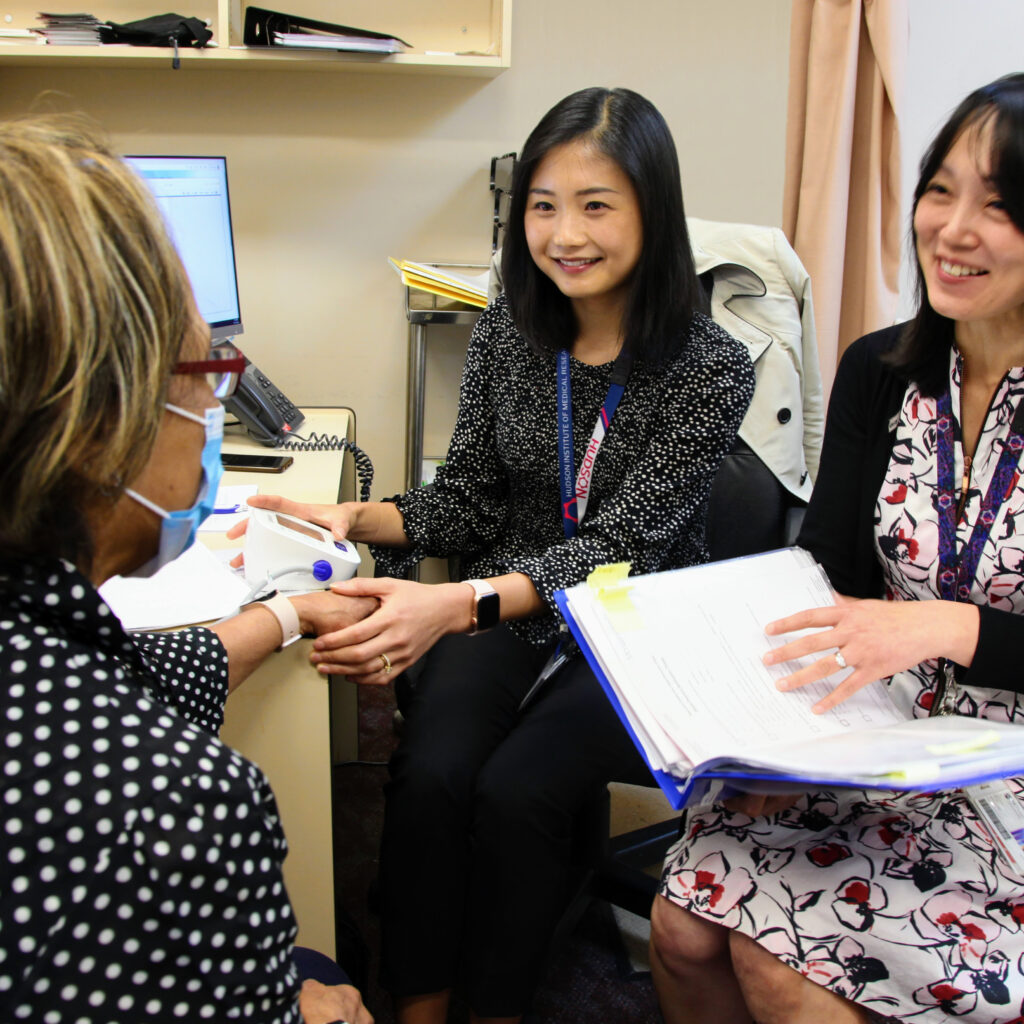Refining how doctors assess hypertension risk
By Rob Clancy, staff writer
They’ve already identified a major undiagnosed cause of hypertension (high blood pressure), now the same team of researchers is helping doctors to better assess hypertension risk.

The team from Hudson Institute of Medical Research established that in around one in seven Australians with hypertension the cause was primary aldosteronism (PA), a condition which usually goes undiagnosed and untreated.
Now they have found that interpreting results of the test for PA may not be as simple as previously thought.
Refining hypertension testing
Their study, published in The Journal of Clinical Endocrinology and Metabolism, found significant variability in aldosterone and renin levels within individuals, so much so that people with PA can have results that look like they do not have PA at times, and vice versa.
Lead researcher and PhD candidate Dr Elisabeth Ng said this means that in most cases, a single test is unlikely to suffice for a reliable diagnosis.
“PA is a condition that occurs due to high levels of a hormone called aldosterone, which is produced by the adrenal glands,” Dr Ng said. “It results in hypertension and can increase the risk of heart and kidney damage.”
“The screening test is an aldosterone-to-renin ratio (ARR), where an elevated ARR prompts further investigations to confirm the diagnosis.
“But in our study nearly 40 per cent of people with PA had at least one ARR result that was considered normal and 46 per cent of those without the condition had at least one test that was considered abnormal,” she said.
Single test is not enough
This study shows us that in the majority of cases, a single ARR test is not enough to rule in or rule out the diagnosis of PA.
These results contribute to an emerging body of evidence that highlights the importance of repeating the screening blood test for primary aldosteronism testing. This will change guidelines for clinical practice and content for educating clinicians.
“An accurate diagnosis is important,” Dr Ng said, “… as the risk of missing the diagnosis of PA is poorly controlled hypertension resulting in an increased risk of stroke, heart disease and reduced kidney function over time.”
“Equally, pursuing the diagnosis of PA involves multiple tests, some of which can be invasive, so it is important to make sure the initial ARR results are truly abnormal before further testing.”
Effective primary aldosterone diagnosis
“Given our current approach to diagnosing PA begins with identifying elevated ARR results, understanding the variability that exists in aldosterone and renin levels will help clinicians to ensure the diagnosis of PA is appropriately pursued or excluded.
“This will mean that people with PA are diagnosed and treated promptly, while those who do not have PA are not put through unnecessary investigations.”
Collaborator | Monash Health
Contact us
Hudson Institute communications
t: + 61 3 8572 2761
e: communications@hudson.org.au
In this article
About Hudson Institute
Hudson Institute’ s research programs deliver in three areas of medical need – inflammation, cancer, women’s and newborn health. More
Hudson News
Get the inside view on discoveries and patient stories
“Thank you Hudson Institute researchers. Your work brings such hope to all women with ovarian cancer knowing that potentially women in the future won't have to go through what we have!”







